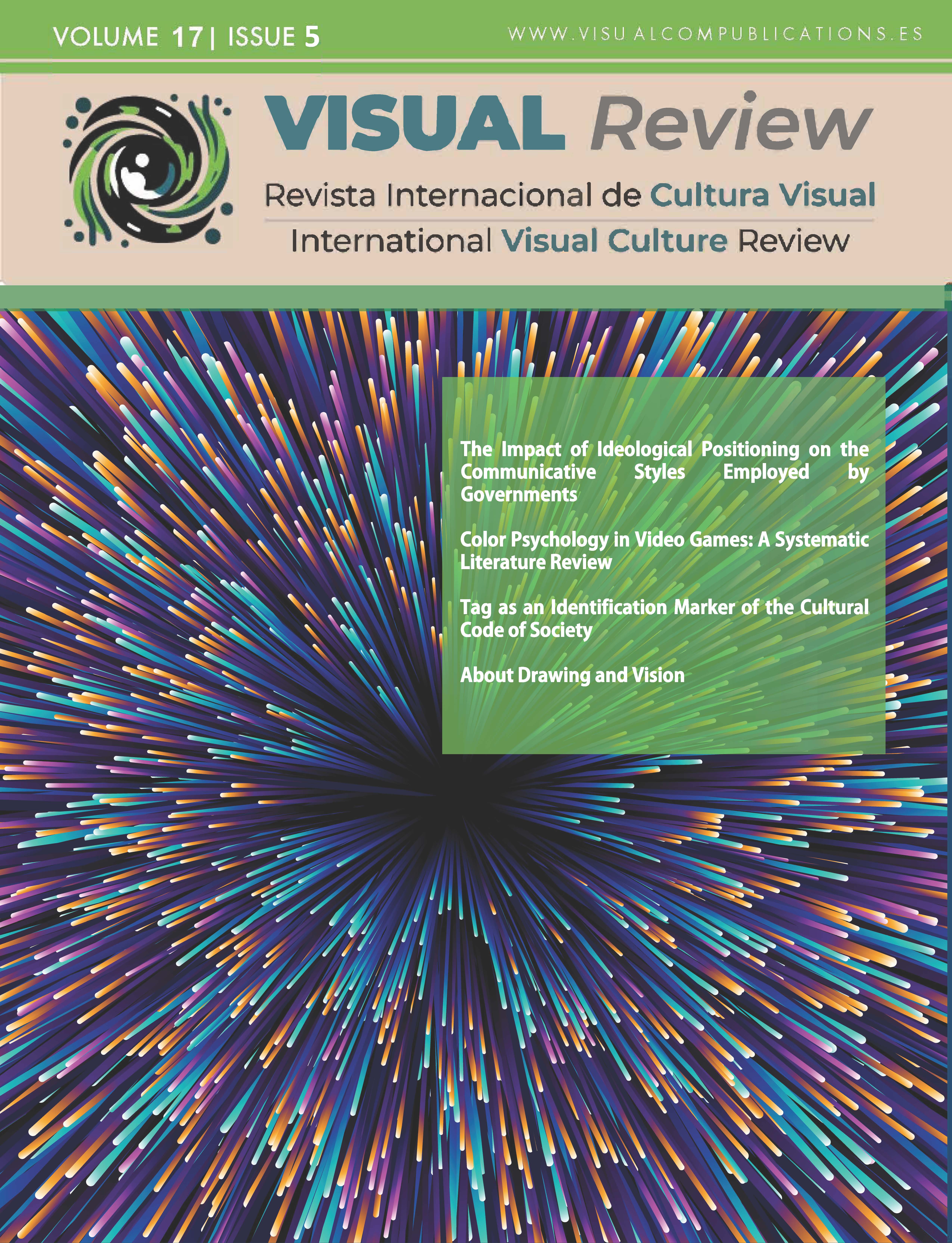Respuesta Emocional a la Comunicación en Redes de Experiencias de Marca Phygital
Análisis Experimental de Neuromarketing
DOI:
https://doi.org/10.62161/revvisual.v17.5858Palabras clave:
Neuromarketing, Phygital, Experiencias de marca, Redes sociales, EmocionesResumen
La Generación Z, reacciona positivamente a la comunicación en redes sociales de una experiencia de marca phygital, si tienen afinidad con la marca. Se han analizado las emociones espontáneas de 28 estudiantes con una metodología experimental, utilizando el software de neuromakreting, FaceReader 9 de Noldus. Los resultados confirman que la afinidad con la marca predispone a emociones como sorpresa y alegría, al ser invitados a una experiencia de marca phygital (física y digital), pero ello no siempre predice su intención de asistencia. El estudio contribuye a la comprensión del consumidor ante el phygital, con recomendaciones para la aplicación de estrategias y diseño de las experiencias de marca y de su comunicación.
Descargas
Estadísticas globales ℹ️
|
193
Visualizaciones
|
143
Descargas
|
|
336
Total
|
|
Citas
Atasoy, O., & Morewedge, C. K. (2018). Digital Goods Are Valued Less Than Physical Goods. Journal of Consumer Research, 44(6), 1343-1357. https://doi.org/10.1093/JCR/UCX102 DOI: https://doi.org/10.1093/jcr/ucx102
Batat, W. (2023). Experiential research as a methodological framework for studying consumer behaviors in phygital settings. Qualitative Market Research, 26(3), 269-277. https://doi.org/10.1108/QMR-12-2022-0178 DOI: https://doi.org/10.1108/QMR-12-2022-0178
Batat, W., & Hammedi, W. (2023). The extended reality technology (ERT) framework for designing customer and service experiences in phygital settings: a service research agenda. Journal of Service Management, 34(1), 10-33. https://doi.org/10.1108/JOSM-08-2022-0289 DOI: https://doi.org/10.1108/JOSM-08-2022-0289
Batra, R., Ahuvia, A., & Bagozzi, R. P. (2012). Brand Love. Journal of Marketing, 76(2), 1-16. https://doi.org/10.1509/jm.09.0339 DOI: https://doi.org/10.1509/jm.09.0339
Belghiti, S., Ochs, A., Lemoine, J. F., & Badot, O. (2018). The Phygital Shopping Experience: An Attempt at Conceptualization and Empirical Investigation. En Developments in Marketing Science: Proceedings of the Academy of Marketing Science (pp. 61-74). Springer Nature. https://doi.org/10.1007/978-3-319-68750-6_18 DOI: https://doi.org/10.1007/978-3-319-68750-6_18
Brakus, J. J., Schmitt, B. H., & Zarantonello, L. (2009). Brand Experience: What is It? How is it Measured? Does it Affect Loyalty?: https://doi.org/10.1509/jmkg.73.3.052, 73(3), 52-68. https://doi.org/10.1509/JMKG.73.3.052 DOI: https://doi.org/10.1509/jmkg.73.3.052
Burke, R. R. (2002). Technology and the Customer Interface: What Consumers Want in the Physical and Virtual Store. Journal of the Academy of Marketing Science, 30(4), 411-432. https://doi.org/10.1177/009207002236914 DOI: https://doi.org/10.1177/009207002236914
Chevtchouk, Y., Veloutsou, C., & Paton, R. A. (2021). The experience – economy revisited: an interdisciplinary perspective and research agenda. Journal of Product and Brand Management, 30(8), 1288-1324. https://doi.org/10.1108/JPBM-06-2019-2406 DOI: https://doi.org/10.1108/JPBM-06-2019-2406
Dolot, A. (2018). The characteristics of Generation Z. E-Mentor, 2(74), 44-50. https://doi.org/10.15219/em74.1351 DOI: https://doi.org/10.15219/em74.1351
Fondevila-Gascón, J. F., Vidal-Portés, E., Muñoz-Sánchez, O., & Polo-López, M. (2021). Interactive advertising on HbbTV: An experimental analysis of emotions. Sustainability (Switzerland), 13(14), 1-13. https://doi.org/10.3390/su13147794 DOI: https://doi.org/10.3390/su13147794
Fournier, S. (1998). Consumers and Their Brands Developing. Journal of Consumer Research, 24(4), 343-353. DOI: https://doi.org/10.1086/209515
Pine, B. J., & Gilmore, J. H. (1998). Welcome to the experience economy. Harvard business review, 76(4), 97-105.
Johnson, M., & Barlow, R. (2021). Defining the phygital marketing advantage. Journal of Theoretical and Applied Electronic Commerce Research, 16(6), 2365-2385. https://doi.org/10.3390/JTAER16060130 DOI: https://doi.org/10.3390/jtaer16060130
Krtolica-Lukic, A., Polo-López, M., & Ramírez-Pagès, A. (2024). Phygital Brand Experience: Merging Physical and Digital Formats to Enhance Customer Engagement (pp. 345-360). https://doi.org/10.1007/978-981-97-1552-7_23 DOI: https://doi.org/10.1007/978-981-97-1552-7_23
López Vidales, N., & Rubio, L. G. (2021). Trends in youth behaviour change in the face of the media: Millennials vs Generation Z. Estudios Sobre el Mensaje Periodistico, 27(2), 543-552. https://doi.org/10.5209/ESMP.70170 DOI: https://doi.org/10.5209/esmp.70170
Moravcikova, D., & Kliestikova, J. (2017). Brand Building with Using Phygital Marketing Communication. Journal of Economics, Business and Management, 5(3), 148–153. https://doi.org/10.18178/joebm.2017.5.3.503 DOI: https://doi.org/10.18178/joebm.2017.5.3.503
Morgan, M. (2006). Making space for experiences. Journal of Retail & Leisure Property, 5(4), 305-313. https://doi.org/10.1057/palgrave.rlp.5100034 DOI: https://doi.org/10.1057/palgrave.rlp.5100034
Oishi, H., Nakazawa, K., Takahashi, T., Kyutoku, Y., & Dan, I. (2023). Visualizing the IKEA effect: experiential consumption assessed with fNIRS-based neuroimaging. Frontiers in Neuroergonomics, 4. https://doi.org/10.3389/fnrgo.2023.1129582 DOI: https://doi.org/10.3389/fnrgo.2023.1129582
Schroer. (2008). Defining, Managing, and Marketing to Generations X, Y, and Z. The Portal, XL(March/April), 9. www.HHGFAA.org.
Skiendziel, T., Rösch, A. G., & Schultheiss, O. C. (2019). Assessing the convergent validity between the automated emotion recognition software Noldus FaceReader 7 and Facial Action Coding System Scoring. PLoS ONE, 14(10), 1-18. https://doi.org/10.1371/journal.pone.0223905 DOI: https://doi.org/10.1371/journal.pone.0223905
Sullivan, G. M., & Artino, A. R. (2013). Analyzing and Interpreting Data From Likert-Type Scales. Journal of Graduate Medical Education, 5(4), 541-542. https://doi.org/10.4300/JGME-5-4-18 DOI: https://doi.org/10.4300/JGME-5-4-18
Zarantonello, L., & Schmitt, B. H. (2023). Experiential AR/VR: a consumer and service framework and research agenda. Journal of Service Management, 34(1), 34–55. DOI: https://doi.org/10.1108/JOSM-12-2021-0479
Yu, C. Y., & Ko, C. H. (2017). Applying FaceReader to Recognize Consumer Emotions in Graphic Styles. Procedia CIRP, 60, 104-109. https://doi.org/10.1016/j.procir.2017.01.014 DOI: https://doi.org/10.1016/j.procir.2017.01.014
Wong, A. (2023). Understanding Consumer Brand Love, Brand Commitment, and Brand Loyalty. Journal of Relationship Marketing, 22(2), 87–114. DOI: https://doi.org/10.1080/15332667.2023.2173937
Descargas
Publicado
Cómo citar
Número
Sección
Licencia
Derechos de autor 2025 Los autores/as conservan los derechos de autor y ceden a la revista el derecho de la primera publicación y el derecho de edición

Esta obra está bajo una licencia internacional Creative Commons Atribución-SinDerivadas 4.0.
Los autores/as que publiquen en esta revista aceptan las siguientes condiciones:
- Los autores/as conservan los derechos de autor.
- Los autores/as ceden a la revista el derecho de la primera publicación. La revista también posee los derechos de edición.
- Todos los contenidos publicados se regulan mediante una Licencia Atribución/Reconocimiento-SinDerivados 4.0 Internacional. Acceda a la versión informativa y texto legal de la licencia. En virtud de ello, se permite a terceros utilizar lo publicado siempre que mencionen la autoría del trabajo y a la primera publicación en esta revista. Si transforma el material, no podrá distribuir el trabajo modificado.
- Los autores/as pueden realizar otros acuerdos contractuales independientes y adicionales para la distribución no exclusiva de la versión del artículo publicado en esta revista (p. ej., incluirlo en un repositorio institucional o publicarlo en un libro) siempre que indiquen claramente que el trabajo se publicó por primera vez en esta revista.
- Se permite y recomienda a los autores/as a publicar su trabajo en Internet (por ejemplo en páginas institucionales o personales), una vez publicado en la revista y citando a la misma ya que puede conducir a intercambios productivos y a una mayor y más rápida difusión del trabajo publicado (vea The Effect of Open Access).













